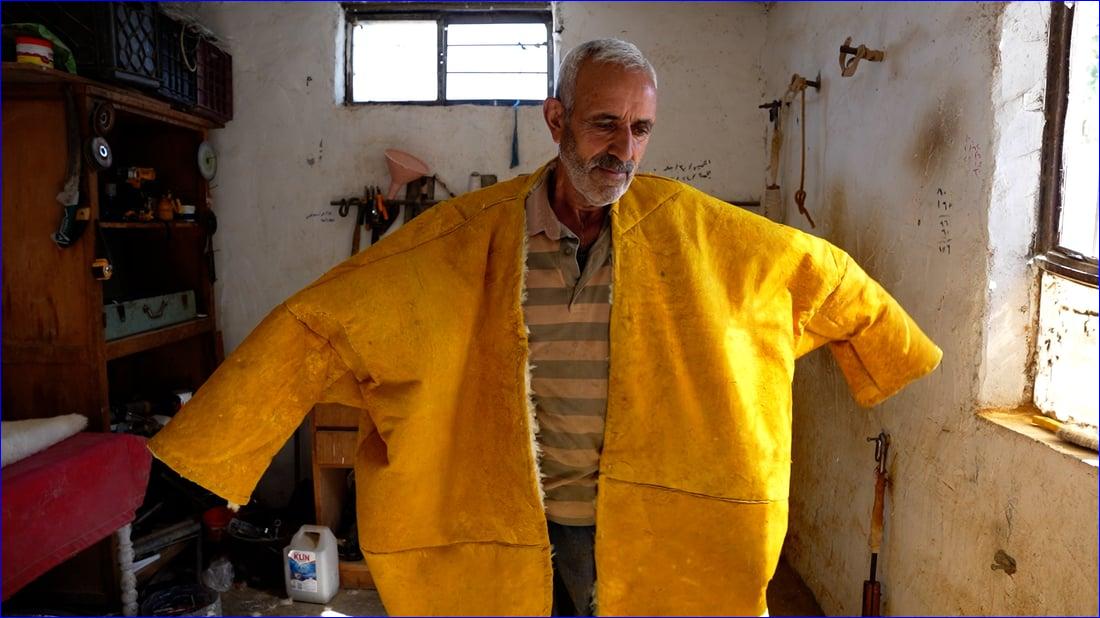


 964media)
964media)
The trade is sustained by craftsmen like Akram Ilyas Yaqub, who works by hand using techniques he says were passed down from Assyrian ancestors. The coats, known as frawi, are valued not only as winter garments but also for bedding, decoration, and car covers.
Yaqub, who learned the trade as a child, said the process begins with sourcing sheepskins from southern cities, particularly Kut. "The first step is bringing the skins, often from Kut. I soak them in water for about six hours, then add alum and leave them to ferment for 12 hours. After that I scrape and clean the hide, then wash it again with hot and cold water mixed with detergent, alum, and salt. I tan the leather in a special solution for six to eight hours, then spread it on the roof to dry," he said.
"When ready, I begin the stage of 'jawzlan' to soften it, add turmeric and fat oil, and the final step is sewing, which takes about 40 days until the fur is complete."
Each coat requires 10 to 12 hides, and prices typically range between 100,000 and 125,000 dinars ($71--$89), though premium models may cost more. "I can make all types of frawi, such as the 'Tarhi' made from fine leather, but I cannot afford the raw material. It needs more than 500 hides," Yaqub said. "The leather I use costs 2,000 dinars ($1.40) per piece, while goat leather sells for 7,000 dinars ($5)."
Goat leather is more common in Kurdistan's industries, but Yaqub prefers sheepskin. "Most of my work is with rough hides because they are cheaper and easier, and the market wants them as bedding, car covers, or decoration," he said.
Most of his hides are supplied by a friend who sorts them by texture and quality, with deliveries coming from Kut, Amarah, Diwaniyah, Nasiriyah, and Samawah. The work is entirely manual and time-intensive: "I need about 60 days for scraping, 60 for jawzlan, and two months for sewing," Yaqub said.
He is also training his children to carry on the craft. "At that time there were no jobs, and everyone had to learn a craft. I inherited it from my father, who inherited it from my grandfather," he said. "It is an Assyrian craft passed down from generation to generation, and I hope it continues."

or register to post a comment.